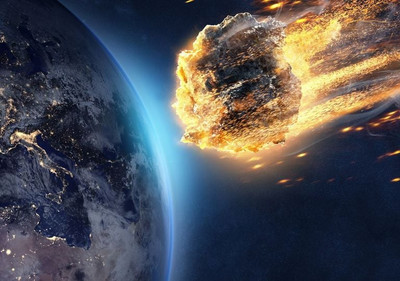Asteroids bring new sea creatures? Asteroids: Carriers of Life and Catalysts of Change by Ronald Beltramo
Posted by Ronald Beltramo on on 29th May 2024
Asteroids have long been regarded as destructive celestial bodies capable of reshaping planetary landscapes. However, recent research suggests they might also play a critical role in delivering the building blocks of life. Some asteroids contain amino acids, the essential components of proteins and, by extension, life itself. These space-borne molecules may have been crucial in the emergence of life on Earth billions of years ago—and perhaps even on other planets.
Asteroids as Cosmic Delivery Systems
Scientists have found space dust particles infused within asteroid material, some containing amino acids that date back thousands of years. This suggests that asteroids may act as interstellar couriers, spreading life’s fundamental ingredients across the cosmos. When these asteroids collide with Earth, they could deposit organic compounds that may have contributed to the planet’s early biochemistry.
Recent asteroid samples, such as those retrieved from Ryugu and Bennu, have confirmed the presence of carbon-rich compounds and amino acids. These findings reinforce the panspermia hypothesis, which proposes that life’s ingredients—or even microbial life—could be transferred between celestial bodies via asteroid impacts.
When Asteroids Strike Earth: Cataclysm and Transformation
While asteroids can bring life’s building blocks, their collisions with Earth often result in catastrophic environmental changes. A direct impact can cause massive wildfires, climate shifts, and even mass extinctions, as seen with the Chicxulub asteroid that wiped out the dinosaurs 66 million years ago. But one of the most fascinating consequences of asteroid impacts occurs beneath the ocean’s surface.
Asteroids and the Deep Ocean: A Hidden World Unveiled
When an asteroid crashes into the ocean, the force generates powerful shock waves, triggering underwater earthquakes and tsunamis. The resulting turbulence disturbs deep-sea environments, potentially displacing strange and rarely seen marine creatures.
The deep ocean remains one of Earth’s last unexplored frontiers, home to bizarre and otherworldly species adapted to extreme pressures and perpetual darkness. The sudden disruption caused by an asteroid impact can force these creatures closer to the surface, revealing life forms never before observed by scientists.
Among the astonishing deep-sea species discovered in recent years are:
-
The Dumbo Octopus – A ghostly, flapping cephalopod that lives thousands of meters below the surface.
-
The Bioluminescent Lanternfish – A tiny fish that produces its own light, glowing in the deep.
-
The Gulper Eel – A nightmarish creature with an expandable mouth capable of swallowing prey much larger than itself.
These discoveries hint at an ocean teeming with unseen, extraordinary life, waiting to be uncovered—perhaps accelerated by the chaos of an asteroid strike.
Nutrient Surges and Ecological Shifts
In the wake of an asteroid impact, nutrient-rich sediments are often churned up from the ocean floor, fueling plankton blooms that can cascade through the marine food web. This sudden boost in productivity can support displaced species, helping them survive in new environments.
For marine scientists, such disturbances present a rare opportunity to study oceanic resilience and adaptation. Observing how deep-sea organisms respond to environmental upheavals could offer insights into how life persists under extreme conditions, both on Earth and potentially on other planets.
Asteroids Approaching Earth: What’s Next?
According to recent reports, multiple asteroids are projected to pass close to Earth this week. While the probability of a significant impact remains low, planetary defense experts remain vigilant. If an impact were to occur—especially in an oceanic region—scientists would closely monitor the event to assess its effects on marine ecosystems and possibly even detect new life forms in the process.
Destruction and Discovery: The Dual Nature of Asteroids
Asteroids are often seen as harbingers of destruction, but they also hold the potential to create and reveal new life. Whether seeding early Earth with the molecules that led to life or disrupting deep-sea habitats to expose hidden species, these cosmic visitors continue to shape our planet in unexpected ways.
With advances in asteroid tracking, space exploration, and deep-sea research, we stand on the brink of uncovering some of the greatest mysteries of the universe—both in the skies above and in the uncharted depths below.

